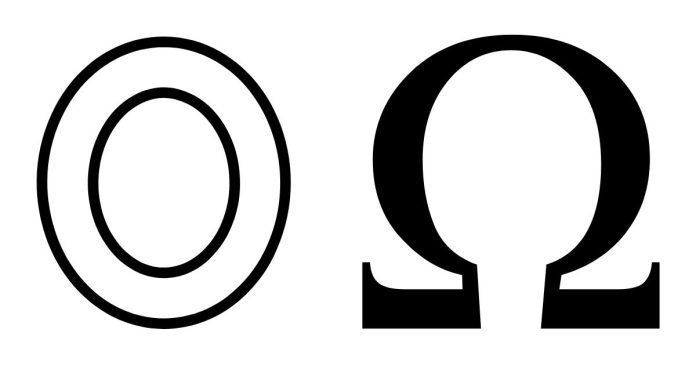Big O (O), Big Theta (Θ), and Big Omega (Ω) are mathematical notations used to describe the performance and efficiency of algorithms, specifically their time or space complexity. They are crucial in the analysis of algorithms to evaluate how the runtime or memory requirements grow relative to the input size.
1. Big O Notation (O): Upper Bound
- Definition: Big O represents the worst-case time complexity of an algorithm. It provides an upper limit on the time or space an algorithm may take as the input size grows.
- Purpose: Ensures that the algorithm won’t exceed a certain threshold of performance.
- Use Case: To guarantee that the algorithm performs efficiently even in the worst-case scenario.
- Example: If an algorithm has a time complexity of O(n2)O(n^2), it means that as the input size (nn) increases, the runtime will grow at most quadratically.
Example in a Graph: Big O shows the line above which the algorithm’s performance will never grow.
2. Big Theta Notation (Θ): Tight Bound
- Definition: Big Theta represents the exact time complexity of an algorithm. It bounds the algorithm both from above and below. The runtime will always grow at the same rate, regardless of best, average, or worst cases.
- Purpose: Describes the algorithm’s growth rate when it is predictable and consistent.
- Use Case: Used when the upper and lower bounds of an algorithm’s complexity are the same.
- Example: If an algorithm has a time complexity of Θ(n2)Θ(n^2), the runtime grows exactly quadratically with the input size.
Example in a Graph: Big Theta shows a band within which the algorithm’s performance will always lie.
3. Big Omega Notation (Ω): Lower Bound
- Definition: Big Omega represents the best-case time complexity of an algorithm. It provides a lower limit on the time or space an algorithm may take as the input size grows.
- Purpose: Ensures that the algorithm will perform at least as well as the lower bound in the best-case scenario.
- Use Case: Used to understand the minimum time or resources required for an algorithm.
- Example: If an algorithm has a time complexity of Ω(n)Ω(n), the runtime will grow linearly at a minimum.
Example in a Graph: Big Omega shows the line below which the algorithm’s performance will never fall.
Key Differences Between O, Θ, and Ω
| Aspect | Big O (O) | Big Theta (Θ) | Big Omega (Ω) |
|---|---|---|---|
| Meaning | Upper bound | Tight (exact) bound | Lower bound |
| Best/Worst/Average Case | Describes the worst case | Describes the tight bound (best, average, and worst case) | Describes the best case |
| Growth Bound | The algorithm will not exceed this | The algorithm grows at this exact rate | The algorithm will grow at least this fast |
| Purpose | Ensures efficiency in the worst case | Predicts consistent performance | Sets expectations for the best case |
| Examples | O(n2)O(n^2), O(nlogn)O(n \log n) | Θ(n2)Θ(n^2), Θ(nlogn)Θ(n \log n) | Ω(n2)Ω(n^2), Ω(n)Ω(n) |
Illustrative Example: Linear Search
Consider linear search, where we search for an element in an unsorted array of size nn:
- Big O (O(n)): In the worst case, the algorithm must search the entire array, leading to nn comparisons.
- Big Theta (Θ(n)): In the average case, the algorithm also takes nn comparisons (assuming all positions are equally likely for the target).
- Big Omega (Ω(1)): In the best case, the target is found on the first comparison.
Summary
- Big O gives the upper bound (worst-case performance).
- Big Theta gives the exact bound (growth rate matches upper and lower limits).
- Big Omega gives the lower bound (best-case performance).
By understanding all three, you can thoroughly evaluate and compare the efficiency of algorithms.


